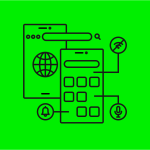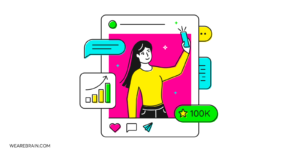Living in the moment: What marketers need to know about micro-moments

“Life is a series of moments and moments are always changing.” – Cecilia Ahern
The role of a good marketer has always involved playing psychologist in an attempt to get inside the minds of consumers. The goal is to examine the various socio-economic and physiological elements which influence their buying behaviour. A long time ago, marketers realised that crude, all-out assaults on consumers’ wallets weren’t going to cut the proverbial mustard any longer.
We are living in a time where consumers are spoilt for choice and thus are far more discerning with their choices. Marketers quickly realised that the best way to achieve the end goal of a juicy bottom line is to tap into consumer psychology. They now aim to win over the hearts and minds of consumers to not only achieve sales conversions but to instil a sense of brand loyalty (which ensures an ongoing bottom-line into the future).
The concept of playing on consumers’ physiological habits is an art which undergoes continual refinement. It adapts to new marketing landscapes which set the tone for redefined brand-consumer relationships. In the next step of this evolution in marketing, advertisers and marketers are focusing their attention to identifying new ways to provide solutions to almost any consumer needs and wants. They are called micro-moments, and they are showing just how effective this approach can be in not only meeting the needs of consumers but also continually enforcing strong brand loyalty.
What are micro-moments?
The term was coined by Google to describe the precise moments when consumers go online to act on a specific need or purpose. Most of our online search interactions can be placed into 5 categories or habits: I want to learn something, I want to go somewhere, I want to watch something, I want to do something, and most importantly for marketers, I want to buy something. These are micro-moments, and marketers are beginning to leverage them to get their product or service front-and-centre when consumers are actively engaging in these moments.
Micro-moments:
- I want to know
- I want to do
- I want to go
- I want to watch
- I want to buy
Consumers have become increasingly discerning when it comes to the products or services they buy and the companies they choose to support, thanks largely to the proliferation of businesses and products/services. Consumer’s expectations are higher than ever thanks to our technology-saturated world. We are a simple click and swipe away from anything we want. This has caused consumers to expect and want immediate gratification in the form of solutions to their needs.
According to Matt Lawson, former VP of Ads Marketing at Google and brains behind the micro-moments concept, consumers have developed a ‘digital reflex’ when confronted with a purchasing need. This is a common situation that occurs when consumers want something. They essentially have intent, so they immediately reach for the nearest device to search for it, whether it is a new product, service, or action they desire to take (i.e. going to the movies). Because consumers are reaching out for information in a desire for immediacy, these are the moments when consumers are open to having their preferences shaped. They’re open to receiving help (commonly in the form of suggestions) about decisions they want to make along their journey to accomplish something.
During micro-moments, consumers are displaying decision-making behaviour, and this is where marketers can excel in promoting their product or service. The soil is ripe for purchase. Marketers know that by being highly present during micro-moments – by suggestions and recommendations – they are not only being seen at a time of need, they are also able to assist and be relevant during the consumer journey. The result is that providing a quick solution to an immediate need allows marketers and advertisers to win the hearts and minds of consumers, and ultimately their money.
Examples of micro-moments
Micro-moments can be split into 2 parts: immediate and ongoing.
Immediate:
Say you use an electric toothbrush every morning and one day it stops working right in the middle of a deep clean. This isn’t the first time it has failed to finish the job, so you make the decision that it is finally time to purchase a new one. What do you do? You reach for your nearest smart device and search for a new electric toothbrush, right? Of course, you do, that’s what we all do. This means you are undergoing a micro-moment.
Immediate micro-moments are isolated instances when you need an immediate solution to a problem. You go online with an intent to buy, and for marketers, that means half the battle is already won – now all they need to do is channel your attention to their product.
Ongoing:
Of course, not all your online purchases are immediate solutions to ad-hoc problems, a lot of larger purchases require ongoing research, such as when you want to buy a car or a home. Ongoing micro-moments are steps in an ongoing journey toward a determined end-goal. For example, people generally won’t purchase a new car on their first online research. Rather the decision is made after a few attempts to get as much information about the car, in order to feel like you are making the right call. Although ongoing micro-moments are not isolated occurrences, their end-goal remains the same, so marketers are able to leverage the consumer journey multiple times throughout the journey.
People don’t have time anymore to sit and research for an entire afternoon – we are busier than ever. So they use ‘stolen moments’ throughout the week to continue their journey, standing in line in the grocery store, waiting in the car to pick up kids from school, etc. These are the moments most people use to advance their consumer journey toward finding the right product or service.
How to leverage micro-moments as a marketer
The primary aim for all marketers and advertisers is to create a seamless, frictionless buying experience for each consumer. It is important for marketers to identify these key micro-moments in order to be front and centre when users are fulfilling their needs online. Leverage these micro-moments and provide the right solution – your product or service – for what they are looking for
The best way to achieve this is by following these 3 basic principles:
1. Understand your audience thoroughly
Conduct extensive market research into the buying personas of each primary consumer type. The aim is to understand all the vital motivating factors which lead consumers to purchase things online and how you can find ways to simplify this process. Place ongoing resources toward this because people and trends change constantly. From this you will be able to;
2. Perform extensive brainstorming on each persona’s micro-moments in relation to your product or service
When you understand the motivating factors informing consumer buying behaviour, you will be able to anticipate with semi-certainty what their needs are and how you can provide solutions for them.
3. Develop strategies, tactics, and messaging specifically focussed on these moments
To get your message in front of your target marketing while they are active, you have to tailor your messaging to address their needs in the micro-moment. A simple yet effective way to identify their needs is through search portals such as Google where your target audience are literally spelling out their needs and requirements for you. So start with Google advertising as your first and safest bet.
Don’t always rely on demographics
According to Simon Kahn, CMO of Google APAC, in the search for immediacy, consumers are more likely to be more loyal to their own immediate needs rather than to a particular brand or model. “Intent is far more important than demographics. If you just use demographics, then you are missing out on many opportunities for conversion when consumers display intent to purchase your product in isolated instances.”
This can best be explained by an example of an uncle purchasing a gift for his niece. Marketing demographics will dictate that when he goes online to purchase things, suggestions of products and services will target the fact that he is male, of a certain age, from a particular location, etc. thus creating a consumer profile. Although demographic-reliant marketing efforts do yield decent results most of the time, they miss out on the opportunities Kahn stated above.
When the uncle is searching for a gift for his niece, he will be looking for things that do not apply to him in the slightest. So recommending the latest men’s fragrance is not going to assist him in his purchase journey. At that moment, the man is acting outside of his demographic and thus will not subscribe to his usual buying trends.
Micro-moment marketing
Ben Fitzpatrick, Head of Operations at Web Profits, provides some insight into how marketers and advertisers alike can leverage micro-moments into sales conversions by using a consumer purchase journey of new earphones as an example.
Examples of specific micro-moments for marketers to identify:
- There is the moment when a consumer has just purchased a new phone and is immediately searching for new accessories
- A more targeted moment is for runners looking for new earphones which can specifically handle sweat
- Competitor micro-moments can be when a consumer has just left the Apple store and is looking for other versions of AirPods
- A specific moment when the consumer has had an annoying experience with tangled chords and is looking for wireless options, and
- The decision to purchase moments: when the consumer has already decided that they are going to purchase new earphones
Anyone searching Google for wireless earphones is experiencing a micro-moment. Marketers need to identify which sites or platforms consumers will likely visit to get more information about the product or service and specifically tailor their messaging for each particular moment.
For example:
- There is the moment when a consumer has just purchased a new phone and is immediately searching for new accessories
- A more targeted moment is for runners looking for new earphones which can specifically handle sweat
- Competitor micro-moments can be when a consumer has just left the Apple store and is looking for other versions of AirPods
- A specific moment when the consumer has had an annoying experience with tangled chords and is looking for wireless options, and
- The decision to purchase moments: when the consumer has already decided that they are going to purchase new earphones
Choosing your channels for communication and advertising is crucial. For example, for people looking to compare the best earphones on the market, it is a good idea to market your product on product comparison websites, influencer platforms, unboxing videos on YouTube, etc.
Summary
We no longer go online anymore, we live in it. Micro-interactions are where most of us interact with the digital world on a daily basis. The approach is effective because it focuses entirely on the consumer and the conversion. This helps you to ensure that your marketing and ad spend is placed in the moments when you can have the biggest impact. Identifying micro-moments helps pinpoint the specific needs of consumers and how your product or service is able to meet those needs.
Paula Ferrai
Working Machines
An executive’s guide to AI and Intelligent Automation. Working Machines takes a look at how the renewed vigour for the development of Artificial Intelligence and Intelligent Automation technology has begun to change how businesses operate.







